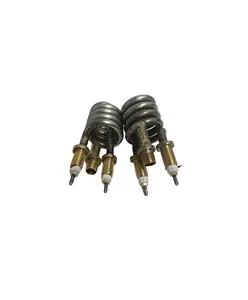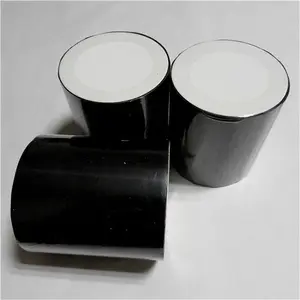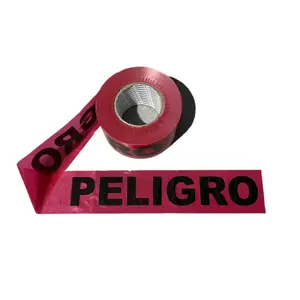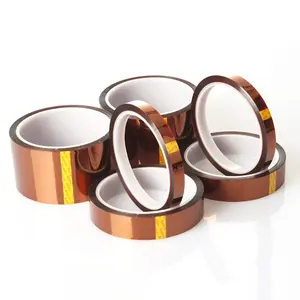Introduction
As winter approaches, the need for efficient and reliable heating solutions becomes paramount. One such solution is electrical heat tape, a versatile tool that prevents ice dams on roofs and keeps exposed pipes from freezing. This guide delves into the intricacies of electrical heat tape, discussing its working principle, types, benefits, and installation process. It also explores how to choose the right heat tape based on your specific needs, with a focus on energy efficiency and safety considerations. Whether you're a homeowner looking to protect your property from the harsh winter or a professional seeking to understand more about this heating solution, this guide provides comprehensive insights into the world of electrical heat tape.
Understanding Electrical Heat Tape
Electrical heat tape is a versatile tool used to prevent ice dams on roofs or to keep exposed pipes from freezing in winter. It works on the principle of resistive heating, where a conducting wire gets hot when electricity flows through it. The heat tape is designed to be minimally flexible for roofs and thin and supple for pipes. It generates temperatures between 450 to 500 degrees Fahrenheit, but some products can produce higher temperatures. An inline thermostat is often included to monitor the temperature and prevent overheating.
Types of Electrical Heat Tapes
Electrical Heat Trace Cables come in two general categories: Constant Wattage and Self-Limiting/Self-Regulating. Constant Wattage Cable emits a certain amount of wattage per linear foot at a specific voltage, regardless of the surface or ambient temperature. It requires a control device to prevent overheating. Self-Limiting/Self-Regulating Cable adjusts its power output in relation to the surface temperature and ambient conditions, reducing wattage output as conditions get hotter. It can be used without a control device, but one is needed if a specific temperature is required.
Self-Regulating Heat Tapes
Self-regulating heating cables are used to efficiently and safely apply heat for various applications. They offer protection against burst water pipes, frozen roofs and gutters, ice and snow formation on ramps, stairways, and walkways. The self-regulating nature of the cable makes it an energy-efficient option because power consumption is reduced when less heat is required. This feature also increases the safety and longevity of the cable and makes installation easier. If a self-regulating cable crosses over itself, its ability to react to ambient temperature ensures it won’t overheat and burn out.
Constant Wattage Heat Tapes
Constant wattage heat tapes, or heating cables, produce the same amount of heat throughout their length, ensuring consistent power output and evenly distributed heat. They are beneficial for maintaining consistent heat throughout your home, controlled via a thermostat or control system. These cables can provide supplemental or primary indoor heating, roof protection, and gutter protection. They are a reliable and consistent heating source that will protect your home from ice and snow. Prices for these kits vary, but on average, they are competitively priced.
Benefits of Using Electrical Heat Tape
Electrical heat tape offers numerous benefits. They easily wrap around various objects, providing intimate contact for efficient heat transfer. These tapes heat up faster due to their high watt density, reducing production downtime. They can reach high temperatures quickly, making them suitable for diverse applications. Moreover, these heating tapes are durable and long-lasting, thanks to their advanced resistance wire technology. They are easy to install and re-install, making them an ideal solution for unexpected maintenance needs.
Energy Efficiency
Electrical heat tape can significantly impact energy consumption, especially when used extensively. It typically burns electricity at six to nine watts per foot per hour, which can add a substantial cost to your monthly electricity bill. However, energy efficiency can be improved by using a heat tape timer, which ensures the system runs only when needed. It's recommended to operate heat tape during the day, especially when snow or ice is present on the roof. Some systems can be hard-wired and self-regulating, burning hot only where the tape is touching ice, further enhancing energy efficiency.
Safety
It is recommended to replace uncertified heat tapes older than three years with new ones certified by recognized organizations. Electric heat tapes are used to prevent water pipes from freezing and are typically installed in attics or underneath homes. The use of certified heat tapes can help reduce the risk of fires and injuries. Hence, the use of certified heat tapes is a crucial safety measure.
Versatility
Electrical heat tape offers versatility in its applications. It's ideal for situations where small, cylindrical sections require high power densities, indicating high temperatures. Available in fixed lengths, heat tape can't be trimmed, but its power ranges from 52 W to 3,135 W, with power densities from 4.3 W/in² up to 13.1 W/in² for high-temperature versions. However, it's a constant-wattage product, requiring a temperature controller for safe operation. It's important to note that heat tape must be wrapped carefully to ensure efficient heat conduction and prevent overheating.
Installation and Maintenance of Electrical Heat Tape
Installing heat tape is a preventive measure against pipe freezing. It's crucial to use automatic, thermostatically controlled heat tape, especially for plastic pipes. The tape should run the entire length of the pipe, including below ground level to the frost level. Follow the manufacturer's instructions for attaching and spacing the tape. Cover the pipe and heat tape with insulation or pipe jacketing for added protection. Finally, plug the heat tape directly into a Ground Fault Circuit Interrupter (GFCI) receptacle. Regular checks are necessary to ensure the heat tape is not worn or frayed.
Choosing the Right Electrical Heat Tape
Choosing the right electrical heat tape depends on your specific needs. For short-term solutions or limited budgets, constant wattage cables, though less energy-efficient, may suffice. However, for long-term, energy-efficient solutions, self-regulating heat cables are recommended. These 'smart' cables only consume the energy they require, making them more cost-effective in the long run. They are also more durable, reliable, and easier to install. Therefore, your choice should be based on your goals, budget, and the expected lifespan of the solution.
Considerations for Energy Efficiency
For energy efficiency, consider using a heat tape timer to run the system more efficiently when needed and turn it off when not. It's best to run heat tape during the day, particularly when snow or ice is on the roof. Control times and temperatures will vary based on factors like elevation, sun exposure, and insulation. Opt for a hard-wired system that uses a more efficient voltage of 220 and is self-regulating. Remember to switch off the heat tape once the roof is melted out to avoid high electricity bills. Some systems can be tied into the building’s automation controls for optimal efficiency.
Sizing and Placement
Choosing the right size and placement of electrical heat tape is crucial for efficient operation. The thermostat, placed tightly against the pipe, senses the pipe's temperature and regulates the cable's operation to prevent freezing. The heating cable should be fastened to the pipe at approximately 600 mm intervals. For enhanced energy efficiency and freeze protection under extreme cold conditions, insulation should be added over the heating cable. The thermostat area must be insulated in the same manner as the rest of the heating cable/pipe to maintain uniform temperature. The correct product selection is based on pipe freeze protection against -20°C.
Conclusion
In conclusion, electrical heat tape is a versatile, efficient, and reliable heating solution, especially during the cold winter months. Its two main types, Constant Wattage and Self-Regulating, offer different benefits and can be chosen based on specific needs and budget considerations. The use of electrical heat tape not only ensures safety and prevents damage from freezing but also contributes to energy efficiency when used correctly. However, it's crucial to follow the manufacturer's instructions during installation and maintenance, and to opt for certified products for safety. Whether you're seeking a short-term solution or a long-term, energy-efficient heating method, electrical heat tape can be a valuable tool in your arsenal against the cold.









































 浙公网安备 33010002000092号
浙公网安备 33010002000092号 浙B2-20120091-4
浙B2-20120091-4